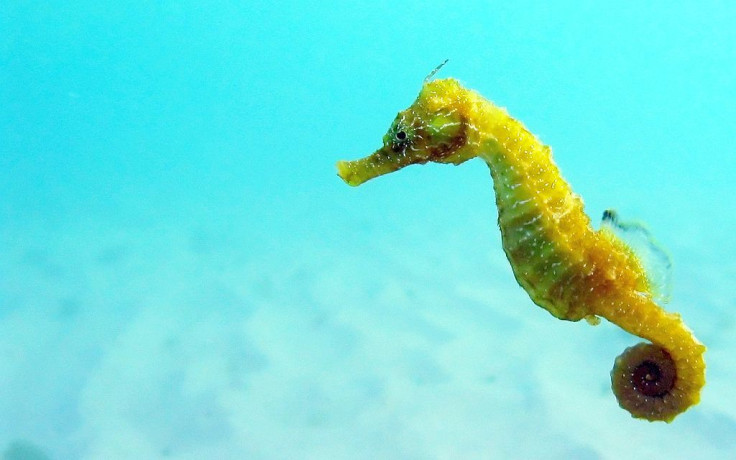Male Seahorses Get Pregnant, And The Way They Give Birth Is Remarkably Similar To Humans

In nature, giving birth isn’t always a female’s job — in fact, seahorse males get pregnant, and they share a lot in common with humans when it comes to breeding and childbirth. A new study out of the University of Sydney examined how male seahorses nourish their embryos during the 24 days that the babies gestate, hoping to better understand the physiological and genetic changes that occur during this period.
It turns out that male seahorses’ pregnancies are quite similar to humans’: They nourish and protect their embryos while they’re inside “brood pouches,” similar to human babies in the womb. Originally, scientists assumed that the mother seahorses provided the embryo with its necessary nutrients — and the father merely provided a brood pouch in which it incubated. But it turns out that dad’s brood pouch is much more than just a holding place.
“Surprisingly, seahorse dads do a lot of the same things human mums do,” Dr. Camilla Whittington, an author of the study, said in the press release. “Seahorse babies get a lot of nutrients via the egg yolk provided by their mothers, but the pouch of the fathers has also evolved to meet the complex challenges of providing additional nutrients and immunological protection, and ensuring gas exchange and waste removal.”
The researchers took samples from seahorse brood pouches, examining gene expression throughout the pregnancy and development of the baby. They found that seahorse dads provide the babies with energy-rich lipids, as well as calcium, which helps in building their skeletons. They also discovered that the gene expression in male seahorses during their pregnancy was similar to that of humans during pregnancy.
After examining the brood pouch throughout embryonic development, the researchers conclude that “key seahorse transcripts share homology with genes of reproductive function in pregnant mammals, reptiles, and other live-bearing fish, suggesting common toolkit of genes regulating pregnancy in divergent evolutionary lineages.”
In other words, seahorse pregnancies weren’t only similar to humans — but they also had a lot of things in common with other species. “Regardless of your species, pregnancy presents a number of complex challenges, like ensuring you can provide oxygen and nutrients to your embryos,” Whittington said in the press release. “We have evolved independently to meet these challenges, but our research suggests that even distantly related animals use similar genes to manage pregnancy and produce healthy offspring.”
Source: Whittington C, Griffith O, Qi W, Thompson M, Wilson A. Seahorse brood pouch transcriptome reveals common genes associated with vertebrate pregnancy. Molecular Biology and Evolution. 2015.



























